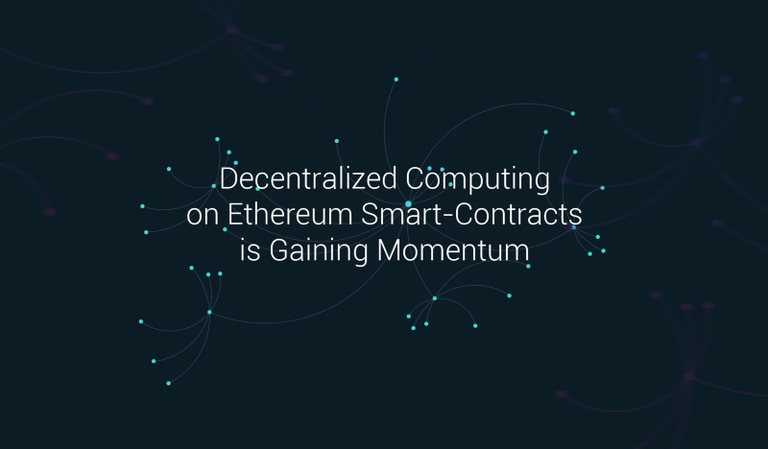
A mega-trend is brewing right under the nose of centralized cloud computing models which could give them a run for their money. It is called decentralized computing, which could radically transform the way data is processed in present times.
Over the past few years, a vast majority of computing has been done through centralized networks. A centralized network acts as a central server for holding and distributing information. So whenever a client — like a web-surfer — request some information, the server decides whether to accept the client’s request or not. It is a server-client model, in which the server has total control over the information, and the client has none.
Decentralised Computing, on the other hand, removes the need of having such a controlled environment. It instead relies on peers — a larger number of servers — that process data in exchange of small rewards. This model distributes computing just like the workload is distributed in a colony of ants. Thus, Decentralized Computing demonstrates an environment which is free from the whims of single-point authorities. It holds the promises of being faster and more secure than its centralized counterparts.
A Distributed World Computer Structure in Making
A Distributed World Computer Structure, in its true sense, represents a scenario in which every smart device is able to allocate its unused power to process data. This creates a web of interconnected peers together producing a powerful and meteoric supercomputer.
Lately, many projects have proposed to utilize decentralized computing to create a distributed world computer structure. The torch was originally lit by Golem, which first showcased the working model of a distributed world computing structure. The project however received negative attention for lacking invention. For example: Golem never cleared the basis of their technology, whether it will use Cloud or GRID. Moreover, the project uses Python as its main programming language, which is entirely web-based.
Another project by the name of iEX has cleared that it uses Xtremweb-hep — based on GRID technology — and a much more appropriate programming language named Java. However, this project also has limitations as GRID traditionally has poor compatibility with clouds. iEX is evidently a poor choice when it comes to meeting commercial standards.
Though there is still SONM, a worldwide supercomputer project, that is hybridizing different proven methods to overcome the aforementioned limitations. SONM uses YANDEX.COCAINE platform, a distributed cloud computing structure which supports SaaS. It is written in C++, and has implementations for Go, Java and Haskell, among others.
COCAINE also has an integrated locator service which allows the system to identify the service accessibility within the cluster. This procedure is called Fog Computing, the emerging solution to the drawbacks of cloud computing. SONM is among the only projects that sufficiently allocates peers to its clients based on geographical preferences.
Hybridization
To ensure it remains relevant to both commercial and personal aspects, SONM uses a hybrid structure that integrates the goods of both GRID and Cloud. The project has also integrated an additional validation system, which will present a unique system of undetermined computation verification. This approach is very unique as far as SONM’s counterparts, Golem and iEX, are concerned. Golem particularly does not validate computations’ results, but is more reliant on their reputation system to safeguard users from malicious miners.
SONM also proposes to create computing pools out of the main number of miners/clients by using a hybrid P2P architecture. This architecture uses a ‘hub’ which serves as a regular client node, and as well as as gateway node. While the client part can add a number of tasks to the hub, and give those to miners, the gateway part can assemble mining power and perform tasks sent in by clients.
That way the client doesn’t need to implement his own node and fine-tune it to connect to the services. Golem also uses a P2P architecture but does not support the implementation of this case.
A Promising Future
The emerging decentralized computing networks can benefit scientific projects requiring higher computational powers, as well as site hosting, game servers, neural network projects and CGI tasks. SONM in particular races ahead of its competitors to fit the commercial aspects and ensure smooth adoption of the distributed cloud technology. This is the reason SONM has decided not to use BOINC, which is one of the GRID software solutions, similar to Xtremweb-hep used by iEX.
Currently SONM is looking to hire world-class specialists on P2P networks and locators (for optimization) and people that have experience working with BitTorrent and Tor Browser software.
https://blog.sonm.io/decentralized-computing-is-gaining-momentum-c921f75e2a5c
Hi! I am a robot. I just upvoted you! I found similar content that readers might be interested in:
https://blog.sonm.io/decentralized-computing-is-gaining-momentum-c921f75e2a5c